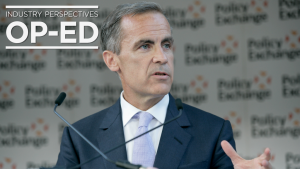It’s time for Canadians to take the lemons they’ve been handed and make lemonade.
The expected squeeze on the federal government‚Äôs desire and ability to fund public infrastructure has materialized, despite promises made last spring that it would unveil a new long-term, stable funding plan for infrastructure development after the $33-billion Investing in ∫⁄¡œ≥‘πœÕ¯ Infrastructure Program reached its funding allocation cap.
And while there is some good news for provinces, territories, municipalities and Indigenous communities with significant infrastructure needs in the recent budget, the reality is, in the current fiscal situation in which ∫⁄¡œ≥‘πœÕ¯ finds itself, there just isn‚Äôt enough money to close the wide infrastructure gap.
The lack of investment will ultimately be a burden borne by future generations. Problems don’t go away; they only worsen over time.
For example, the estimated cost to upgrade Winnipeg’s North End Sewage Treatment Plant, which provides 70 per cent of the city’s wastewater treatment and was first commissioned almost 100 years ago, is expected to top $2.3 billion alone. To date, the federal government has committed $317 million towards the first two phases of the project.
These budget decisions leave our provinces and municipalities in a tight spot. But it‚Äôs also time for all levels of government to face the music ‚Äî the cupboard is bare; the public is in no mood for tax increases, and the need for new and upgraded infrastructure is only growing as ∫⁄¡œ≥‘πœÕ¯‚Äôs population grows at an unprecedented pace.
So, let’s grab hold of our futures and pivot. Let’s finally heed the advice that relying solely on the public purse to fund infrastructure is shortsighted. Let’s find solutions together and innovate.
Embracing innovative infrastructure procurement models that harness private capital and expertise is crucial. This is the only way a growing ∫⁄¡œ≥‘πœÕ¯ can continue to build and bring public spending back in line, while ensuring infrastructure projects not only meet immediate needs but also offer long-term value to Canadians.
For example, estimates to close the First Nations infrastructure gap are a staggering $349.2 billion, which is why the recent Assembly of First Nations report, and some First Nations leaders, are advocating for the use of alternative financing solutions.
In the absence of government support, Lance Haymond has the right approach: “Given the fact that government’s never going to be able to provide us the funding that we need in a timely manner, we would be foolish if we didn’t look at other options,” the Chief of Kebaowek First Nation in the Abitibi-Témiscamingue region of Quebec recently told the CBC.
Our country’s private sector has an enviable reputation at home and abroad for designing, delivering, operating and maintaining a myriad of public infrastructure, including hospitals, highways, courthouses, bridges and schools. Our industry leaders are ready to partner with governments in continuing to invest in the country’s public infrastructure.
The value of a long-term P3 project also means ongoing maintenance, life cycle renewal and operations costs are considered and protected against budget cuts, ensuring a longer life for assets and a better-quality experience for community members who depend on the asset.
In the absence of funding, at the very least what governments can do ‚Äî should do ‚Äî is to create sound public policy, based on impartial data and the expertise of both the public and private sector that provides an environment for stability and growth. That is why the need for ∫⁄¡œ≥‘πœÕ¯‚Äôs promised National Infrastructure Assessment has never been greater.
Governments also need to get out of their own way to encourage private investment in infrastructure, particularly at the municipal level. Canadian pension funds, for example, are known for their public infrastructure investments in P3s abroad like toll roads and airports. We should open up opportunities for them to make these kinds of investments here at home, which can benefit our communities and the Canadians who depend on stable ROI to fund their retirements.
Infrastructure is an important lever that enables more housing, more economic growth, more prosperous communities for all Canadians. It is what underpins the very fabric of this country, equalizing opportunity and uniting us. To ignore it, and to not provide a vision for moving forward, is detrimental to all of us.
Lisa Mitchell is president and CEO of the Canadian Council for Public-Private Partnerships. Send Industry Perspectives Op-Ed comments and column ideas to editor@dailycommercialnews.com.











Recent Comments
comments for this post are closed